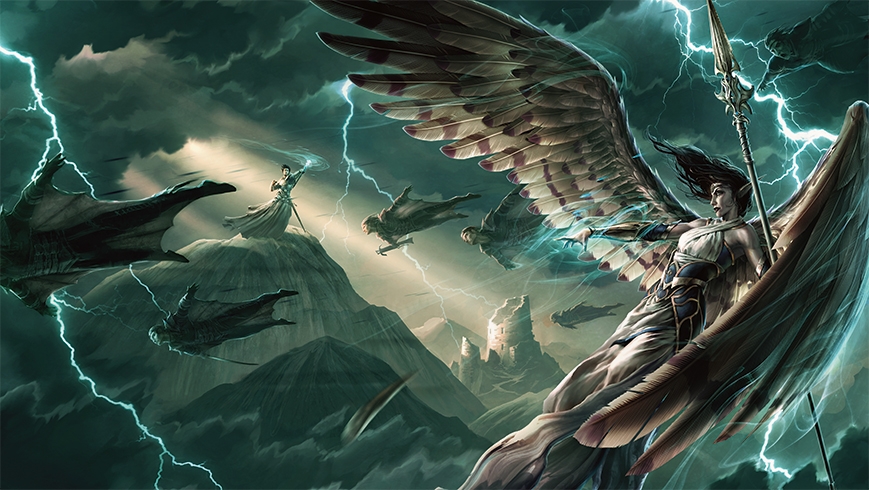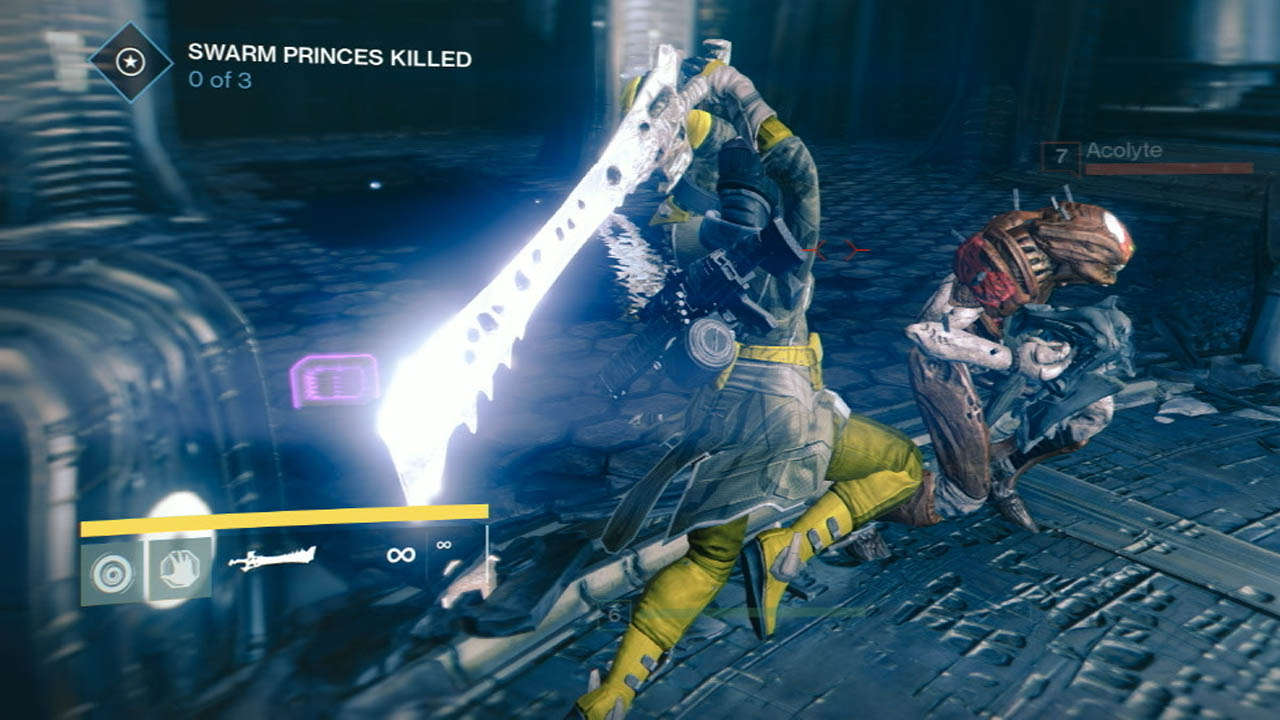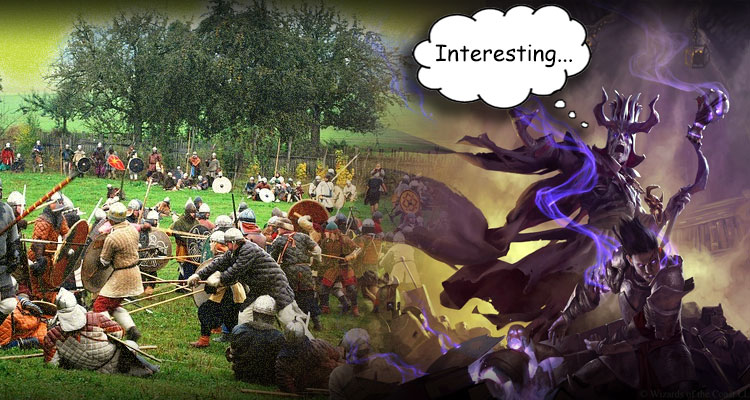In Part 1 of this series, we talked about using objectives and terrain design to spice up your combat encounters. This time, we’re going to be playing with the guts of an RPG system by using Resource and Mechanic modifiers.
Messing with either of these aspects could create a less-than-desirable experience for players if they aren’t prepared or open to the idea… so, modify at your own risk!
Resource & Mechanic Modifiers
Getting players properly engaged in combat requires manipulation of the game itself. All components of a game can be classified into two categories: resources and mechanics.
Resources are the supply of assets available to the players. They’re rarely static, if at all. By definition, they change throughout the course of a session and throughout the entire campaign. Simply stated, resources are anything that players can spend, expire, consume, buy, acquire, or create. The list of resources in most games can be pretty long.
Mechanics, on the other hand, are much more reliable. Mechanics are constructs of rules or methods designed for interactions with the game. In other words, mechanics allow the players, the game master, and the game, to manipulate resources and environments. Resources and mechanics can both be altered to create unique combat encounters.
Resources
Resources are easier to modify, with less chances of “breaking” a game. For example, granting players hit points is less likely to diminish the challenge of an encounter than granting hit point regeneration would be. Nevertheless, both resources and mechanics can be used to make combat more interesting.
Here are some examples of resources that you can manipulate in combat to make it more interesting:
Time
Usually, in combat, time is measured by number of actions, turns, and/or rounds. Setting a cap on any of these really gets the players to think tactically, and to coordinate, because their actions have suddenly become limited.
Combine this with an objective -like having to reach a pond to cleanse themselves of a curse before 4 rounds are over- and you’ll notice that the way players interact with enemies and the environment will change dramatically. Alternatively, perhaps a big enemy gains power every round, and must be destroyed sooner, to prevent it from becoming too powerful for the party to defeat.
Of course, time doesn’t only have to be restrictive. Instead of putting a limitation on the players’ turns or actions, give them more! The initiative order can change as the battle progresses, offering the possibility of a player going twice in a row: once at the end of a round, and again at the beginning of a new round when the initiatives are shuffled.

Modifying how players move can alter how combat is played
Locomotion
A character’s movement is a resource because it can be expended during their turn and regained the next round. Characters can be slowed or accelerated. The most obvious example of this is difficult terrain — it effectively reduces character movement by half unless there are cool abilities at work.
Envision a battle chamber inspired by the gels from Portal 2. One of the gels greatly increases the velocity of objects, and the other repels objects — each affecting jump height. Of course, part of the brilliance in Portal 2 was being able to apply the gels to the environment in order to overcome puzzles. Giving players that kind of power in an RPG (with spells and other abilities) could get chaotic, but would certainly be interesting to watch.
Combine time and movement modifiers for a whole new kind of combat; something more unique than any standard battle encounter.
Hit Points
Hit Points are arguably the player’s most precious resource, and the same can be said for enemies. There are so many ways to mess with hit points that I can’t possibly list them all, but I can offer a few examples that might get your creative juices flowing:
- The battle takes place inside a cursed chamber that houses a relic. The chamber deals damage to all creatures that aren’t protected (all enemies are protected by default). Whoever is holding the relic during their turn regains hit points and is immune from the curse. This forces the players to play hot-potato with the relic to stay alive.
- A big bad-guy has two dedicated minions who have reactions that heal him for a very high amount of HP whenever he takes damage. The boss will have high health and will be casting nasty spells for as long as the minions are alive and able to heal him. This punishes the players who attack him instead of dealing with his life-supporting minions first.
- An artifact increases damage to all characters who use it, but at the cost of losing hit points. Combine this with lots (and lots) of mid-HP minions for a fast-paced display of return-on-investment damage output.
Spells/Abilities
In D&D, there are many spell slots and abilities that players can spend on a daily or sub-daily basis. Many other systems use similar character abilities. Imagine, right before a big battle, the players are hit with a trap that removes the number of times they can use their abilities for that day. Saving a level 5 spell for the big bad-guy at the end of the dungeon? Oops, that lich-wisp just sucked it out of your character.
Why stop there? Use an enemy that not only takes away character abilities, but can then use them for itself. You’ve never seen a Barbarian run away until it’s being chased by a rage-draining floating witch.
Don’t forget that spells and abilities, like all resources, can be given as well as taken away. A Dragon’s Breath weapon or Legendary actions could be neutralized by the shield of an ancient dragon slayer if the players choose to quest for that item before the fight.
Mechanics
Adding mechanical modifiers to a combat encounter can be very risky. The mechanics are in place for a reason — to create a gaming experience that is as consistent and fair as possible. Even still, as a DM, I can’t help but tweak the rules once in a while to see how it plays out. This is analogous to changing the laws of nature — the outcome can be very hard and sometimes impossible to predict. For this reason, mechanical changes should be limited to a vacuum encounter. Be sure to design in a way that the mechanical changes are strictly limited to the encounter area.

Destiny is a shooter, so when the Sword of Crota is introduced it delivers a really fun change of pace to game play.
Damage and the Attack Roll
In combat, damage can dictate the rhythm of the encounter. High damage bursts from enemies can rally players to roll up their sleeves and start hammer time. A higher enemy count with lower damage bursts will tend to create a slower and more tactical encounter.
There is no shortage of ways to modify damage, but making it more interesting than a +1, 2, or 3 modifier to damage rolls requires a bit more imagination. It’s also important to keep in mind that damage itself is a result, not a function, of combat. For example, a critical hit doesn’t increase damage itself, but rather enhances the function of rolling damage.
With that in mind, explore ways to modify the function of rolling damage, starting with the attack. Without a success attack, there is no function to calculate damage to begin with. Advantage and disadvantage are obvious mechanical modifiers that affect damage output. Here are a few examples of modifying attacks:
- When a specific type of creature is killed, the player who killed it gets advantage on attack rolls against that type of creature until the end of their next turn. This will be good for encounters with many of the same type of creature.
- When sent to retrieve the Sword of Eeta the Demon Princess, the adventurers find out that it thirsts for blood. When damage is dealt with the sword, it grants advantage on the next attack roll. Otherwise, the Sword has disadvantage on all attack rolls made with it.
- There are dozens of spells and abilities that grant advantage or disadvantage. Spice up an enemy by giving it one of these abilities, or make up your own.
For me, the most satisfying part of doing damage is getting to roll the dice. The more dice I get to throw at my table, the more empowering it feels. Adding just one extra d6 of fire damage granted by being near a Solar Shrine just feels good, even if it is only once per day. Throw some extra monsters at your players and give them a few extra damage dice to clean them up with.
HP Regeneration and Degeneration
Last but not least in our modifying mechanics feature, is hit point regen. Although hit points are a resource, regeneration and degeneration of hit points are a mechanic. There are a few creatures with hit point regeneration; but adding this mechanic to otherwise mundane NPCs can make them much more interesting, and much more threatening targets. On the other hand, cursing your players with hit point degeneration will make them think twice about their tactical situation in a combat encounter.
- A simple combat puzzle is a mid-damage minion who guards the chamber door and has ridiculous HP regeneration. The only way to stop the regen effect for the round is to cast a healing spell on it.
- The Ruin of Aiur contains a great treasure beyond its lethal hallways. The only way to get through without taking the deadly HP degeneration is to huddle the party around the relic shield, wherever that may be…
- The party tank has no problem taking on the enemy brute, until she’s hit with a health degeneration effect that can only be cleansed by the nearby Light Well -which the brute happens to be defending. Teamwork, much?
Remember, making modifications to both resources and mechanics can be unpredictable and unpleasant if your players aren’t prepared for the change in game play. Talk to your players about this before implementing it!
In the part 3 of this series, we’ll look at how enemy relationships can make combat more interesting. We’ll also have mock-up combat encounters that incorporates many of the elements covered in the series.

